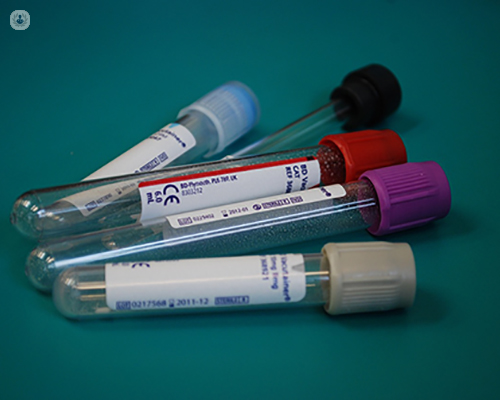Calprotectin
What is being analysed?
Calprotectin analysis involves the measurement of calprotectin levels in stool samples. Calprotectin is a protein released by neutrophils, a type of white blood cell, in response to inflammation in the gastrointestinal tract.

What does the result mean?
The result of calprotectin analysis reflects the level of inflammation present in the gastrointestinal tract. Elevated calprotectin levels indicate ongoing inflammation, which can be indicative of inflammatory bowel diseases (IBD) such as Crohn's disease or ulcerative colitis.
Why do the analysis?
Calprotectin analysis is performed to:
- Aid in the diagnosis of inflammatory bowel diseases (IBD)
- Differentiate between IBD and non-inflammatory conditions such as irritable bowel syndrome (IBS)
- Assess disease activity and monitor response to treatment in patients with IBD
- Identify patients at risk of disease relapse or complications
When to do the analysis?
Calprotectin analysis is typically recommended:
- When evaluating patients with symptoms suggestive of IBD, such as diarrhoea, and rectal bleeding
- When monitoring disease activity or response to treatment in patients with known IBD
- Prior to initiating or adjusting therapy for IBD
What sample is required?
A stool sample is required for calprotectin analysis. Patients are usually provided with a collection kit and instructions for obtaining a sample at home.
Is any type of prior preparation necessary?
Prior preparation for calprotectin analysis may involve avoiding certain medications or dietary restrictions, as advised by the doctor. However, specific requirements may vary depending on the laboratory's protocols.
How is it used?
Calprotectin analysis results are interpreted by healthcare professionals to:
- Aid in the diagnosis of inflammatory bowel diseases (IBD)
- Assess disease activity and severity
- Monitor response to treatment
- Guide clinical decision-making regarding therapy escalation or de-escalation
What are the normal values?
Normal calprotectin levels in stool samples are typically less than 50 micrograms per gram (μg/g) of stool. However, specific reference ranges may vary depending on the laboratory's assay method.
What does it mean to have altered values?
Elevated Levels: Elevated calprotectin levels (>50 μg/g) suggest the presence of inflammation in the gastrointestinal tract, which may indicate inflammatory bowel diseases (IBD) such as Crohn's disease or ulcerative colitis. Additional evaluation, such as endoscopy or imaging studies, may be needed to confirm the diagnosis and assess disease severity.
Normal Levels: Normal calprotectin levels (<50 μg/g) are consistent with non-inflammatory conditions or quiescent disease activity in patients with IBD. However, clinical correlation with symptoms and other diagnostic tests is necessary for comprehensive evaluation.
Table of Calprotectin Values
|
Interpretation |
Calprotectin Levels (μg/g of stool) |
|
Normal |
< 50 |
|
Elevated (Abnormal) |
> 50 |
This table provides a reference for interpreting calprotectin levels in stool samples based on their clinical significance.